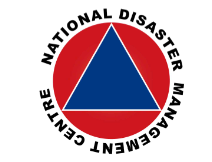Original Research
Application of Standardized Precipitation Index to assess meteorological drought in Bangladesh
Submitted: 25 November 2015 | Published: 30 September 2016
About the author(s)
Md. Anarul H. Mondol, Department of Geography and Environment, Jahangirnagar University, BangladeshSubash C. Das, Department of Geography and Environment, Jahangirnagar University, Bangladesh
Md. Nurul Islam, Department of Geography and Environment, Jahangirnagar University, Bangladesh
Abstract
Bangladesh is one of the vulnerable countries of the world for natural disasters. Drought is one of the common and severe calamities in Bangladesh that causes immense suffering to people in various ways. The present research has been carried out to examine the frequency of meteorological droughts in Bangladesh using the long-term rainfall data of 30 meteorological observatories covering the period of 1948–2011. The study uses the highly effective Standardized Precipitation Index (SPI) for drought assessment in Bangladesh. By assessing the meteorological droughts and the history of meteorological droughts of Bangladesh, the spatial distributions of meteorological drought indices were also analysed. The spatial and temporal changes in meteorological drought and changes in different years based on different SPI month intervals were analysed. The results indicate that droughts were a normal and recurrent feature and it occurred more or less all over the country in virtually all climatic regions of the country. As meteorological drought depends on only rainfall received in an area, anomaly of rainfall is the main cause of drought. Bangladesh experienced drought in the years 1950, 1951, 1953, 1954, 1957, 1958, 1960, 1961, 1962, 1963, 1965, 1966, 1967 and 1971 before independence and after independence Bangladesh has experienced droughts in the years 1972, 1973, 1975, 1979, 1980, 1983, 1985, 1992, 1994, 1995, 2002, 2004, 2006, 2009 and 2011 during the period 1948–2011. The study indicated that Rajshahi and its surroundings, in the northern regions and Jessore and its surroundings areas, the island Bhola and surrounding regions, in the south-west region, were vulnerable. In the Sylhet division, except Srimongal, the areas were not vulnerable but the eastern southern sides of the districts Chittagong, Rangamati, Khagrachhari, Bandarban and Teknaf were vulnerable. In the central regions, the districts of Mymensingh and Faridpur were more vulnerable than other districts.
Keywords
Metrics
Total abstract views: 4160Total article views: 4786
Crossref Citations
1. Drought in South Asia: A Review of Drought Assessment and Prediction in South Asian Countries
Sewwandhi S.K. Chandrasekara, Hyun-Han Kwon, Meththika Vithanage, Jayantha Obeysekera, Tae-Woong Kim
Atmosphere vol: 12 issue: 3 first page: 369 year: 2021
doi: 10.3390/atmos12030369

